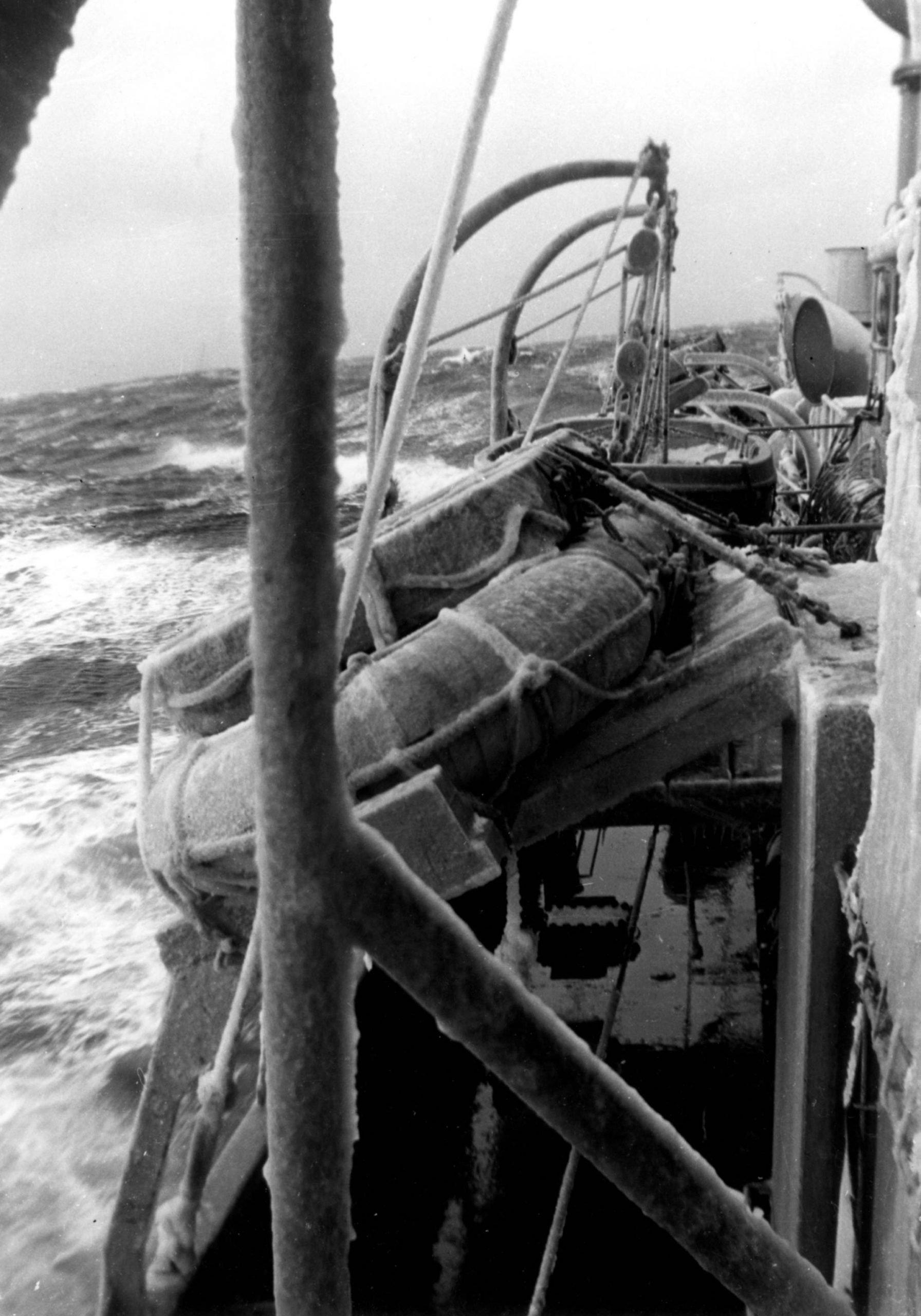
View of the Canadian Morden Corvette (HMCS Morden), covered with a crust of ice, in the North Atlantic in 1944-1945.
The Canadian Morden corvette was hull number K170 and belonged to the Flower class corvettes.
The Morden corvette was built at the Port Arthur Shipbuilding Co. Ltd. in Port Arthur (Ontario, Canada).
Morden corvette construction began on October 25, 1940, launched on May 05, 1941, accepted into the Royal Canadian Navy on September 06, 1941.
Morden corvette, main characteristics: displacement – 925 tons. Length – 62.4-63.4 m, draft – 3.51-3.35 m (depending on modifications), width – 10.06 m. Power plant – two boilers, one propeller. The maximum speed is 16 knots. Cruising range at a speed of 12 knots – 3500 miles. The crew is 85-90 people.
Morden corvette, armament: one 101.6-mm cannon (BL 4 inch Mk IX) at the bow, at the stern – four 12.7-mm Vickers anti-aircraft machine guns (Vickers 0.5) or one 40-mm Pom-pom anti-aircraft gun (QF 2 pounder 1,6 ″ Pom Pom AA gun), along the sides – two twin 7.7-mm anti-aircraft machine guns Lewis (Lewis 0.303) or two 20-mm automatic anti-aircraft guns “Oerlikon” (Oerlikon). Anti-submarine weapons: two aft installations for dropping depth charges (40-70 bombs), 2-4 onboard installations (Mk.II depth charge throwers).
Morden corvette participated in escorting Allied sea convoys between Canada and Great Britain (in particular, SC56, ON73, HX358).
On September 1, 1942, Morden corvette sank the German submarine U-756 (type VIIC) with the entire crew .
Morden corvette was withdrawn from the Canadian Navy on June 29, 1945.
Morden Corvette photo source: Defense Canada.
Location: North Atlantic
Photo time: 1944 – 1945